Physical Address
304 North Cardinal St.
Dorchester Center, MA 02124
Physical Address
304 North Cardinal St.
Dorchester Center, MA 02124
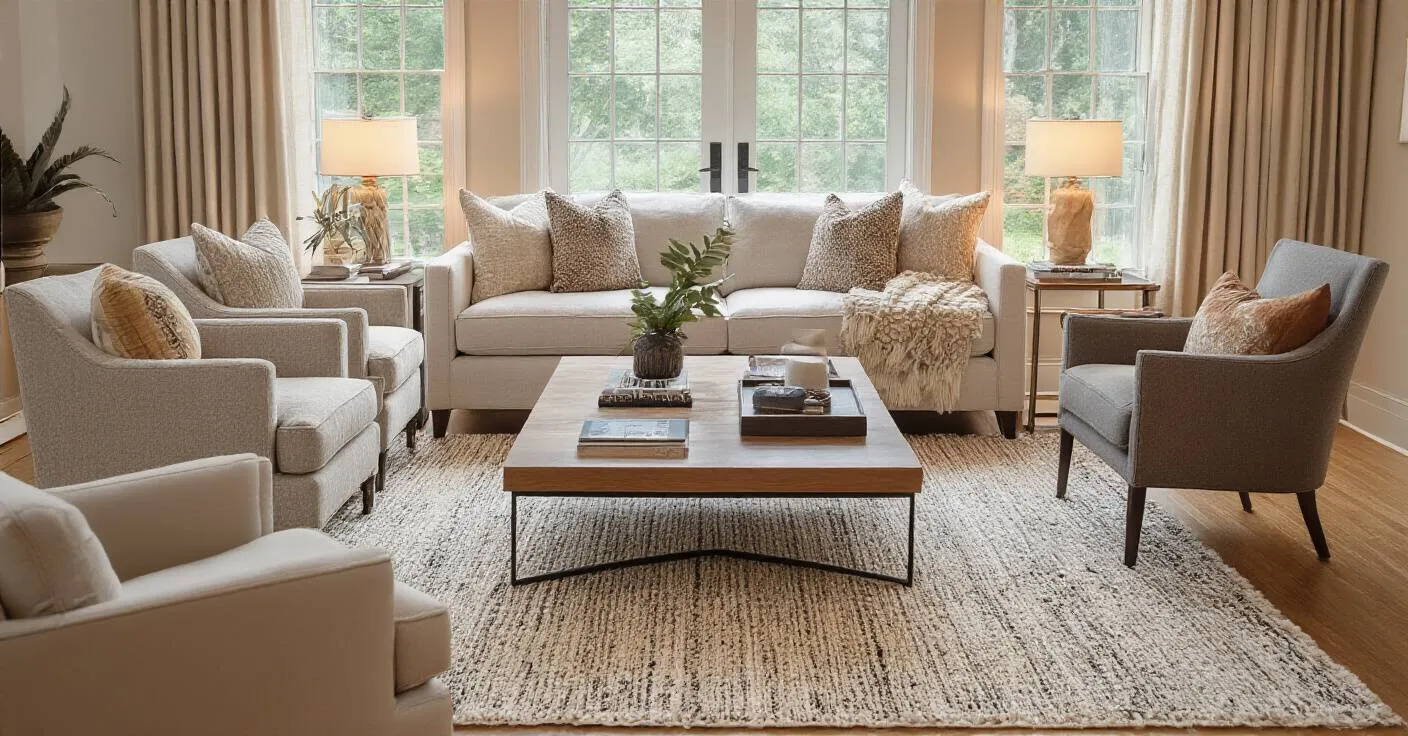
Transform your living space with this practical guide to choosing, placing, and maintaining the perfect rug.
Can we talk about the number one thing I see people screw up when designing their living space? It’s not the paint color. Not the sofa. It’s the rug. They either buy one that’s the size of a postage stamp, turning their furniture into a sad, floating island, or they pick a material that self-destructs the second a kid or a dog looks at it. A bad rug saps the energy from a room. It makes the space feel cramped, awkward, and uninviting. And let’s be real—if you don’t feel good in a space, you’re not going to use it to recharge, and you’re definitely not rolling it up to do a workout.
Your living room rug isn’t just decoration; it’s the foundation of the room’s energy. It’s the anchor for your life and your wellness. It defines your space for relaxation, for family time, and yes, for your home fitness routine. Think of it as the core of your living space—get it right, and everything else falls into place. Get it wrong, and you’re constantly fighting against it. So let’s cut through the noise. Here’s the real-deal guide to picking a rug that not only looks incredible but works as hard as you do.
This is your prep work. Just like you wouldn’t start a workout cold, you don’t buy a rug without nailing these fundamentals. Get these right, and you’ve set yourself up for success. Skimp here, and you’re setting yourself up for an injury—a design injury, that is.
People always ask me, “What’s the one thing that makes a room look ‘professionally designed’?” It’s a properly sized rug. End of story. An undersized rug makes everything feel cheap and chaotic. It visually shrinks your room because your eye just sees this little patch in the middle of a vast, empty floor. A good rug creates a “zone.” It’s a platform that says, “This is where we relax,” or “This is our conversation spot.” It grounds everything, connects the furniture, and makes the whole space feel intentional and expansive.
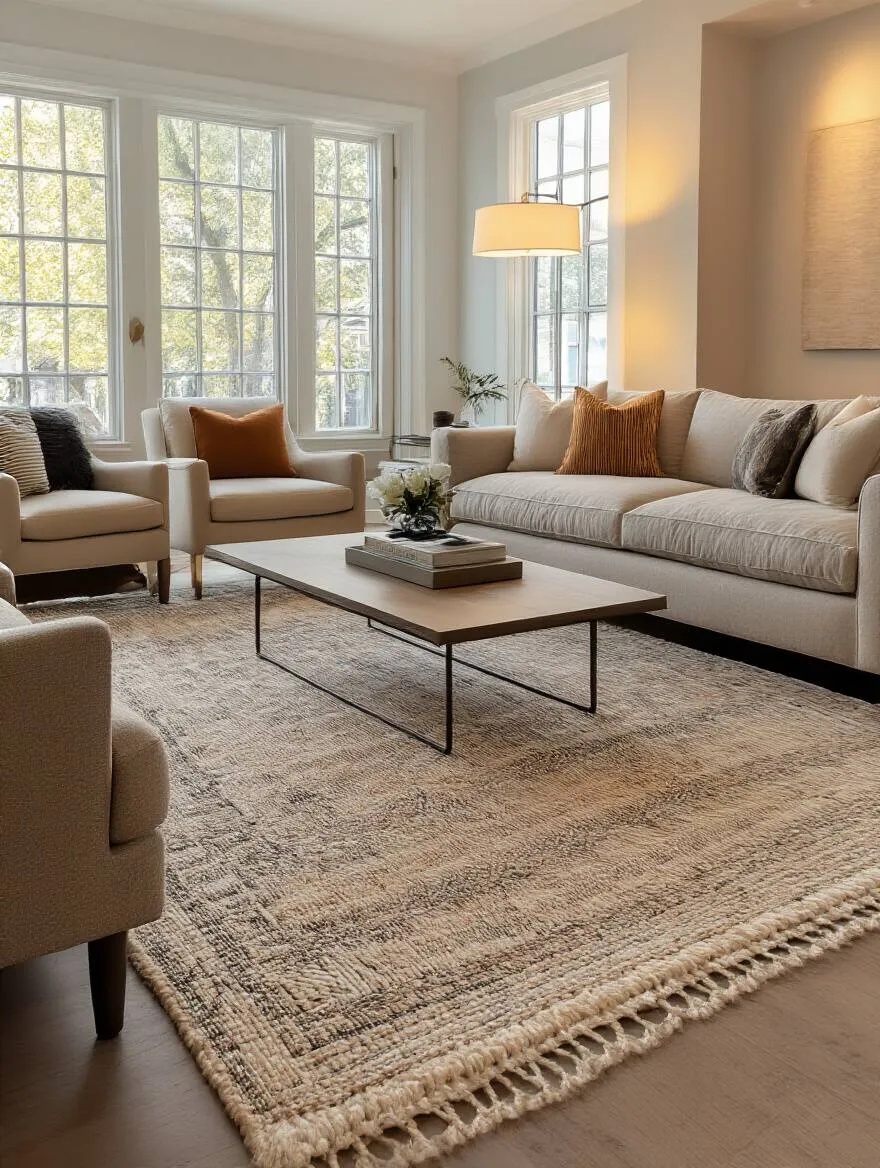
Here’s the only shortcut you need: the painter’s tape trick. Before you even think about clicking “buy,” take some blue painter’s tape and outline the standard rug sizes on your floor—8×10, 9×12, whatever. Live with that blue rectangle for a day. Walk around it. See how it feels. This move costs you five bucks and five minutes, and it will save you from the massive headache of returning a 100-pound rug that’s completely wrong. Seriously, do not skip this step.
Once you know what size you need, you’ve got to figure out what it should be made of. That’s all about knowing how you really live.
Everyone wants to talk about how a rug looks. I want to talk about how it performs. A beautiful silk rug in a house with a Golden Retriever and two toddlers is just a future tragedy. The material you choose is a direct reflection of your lifestyle. Do you have high traffic? Are there pets in the home? Do you like to stretch or do yoga on the floor? These aren’t minor details; they’re everything. Choosing the right material means your rug will look great for years, not weeks. It’s the difference between a smart investment and a pile of frayed fibers.
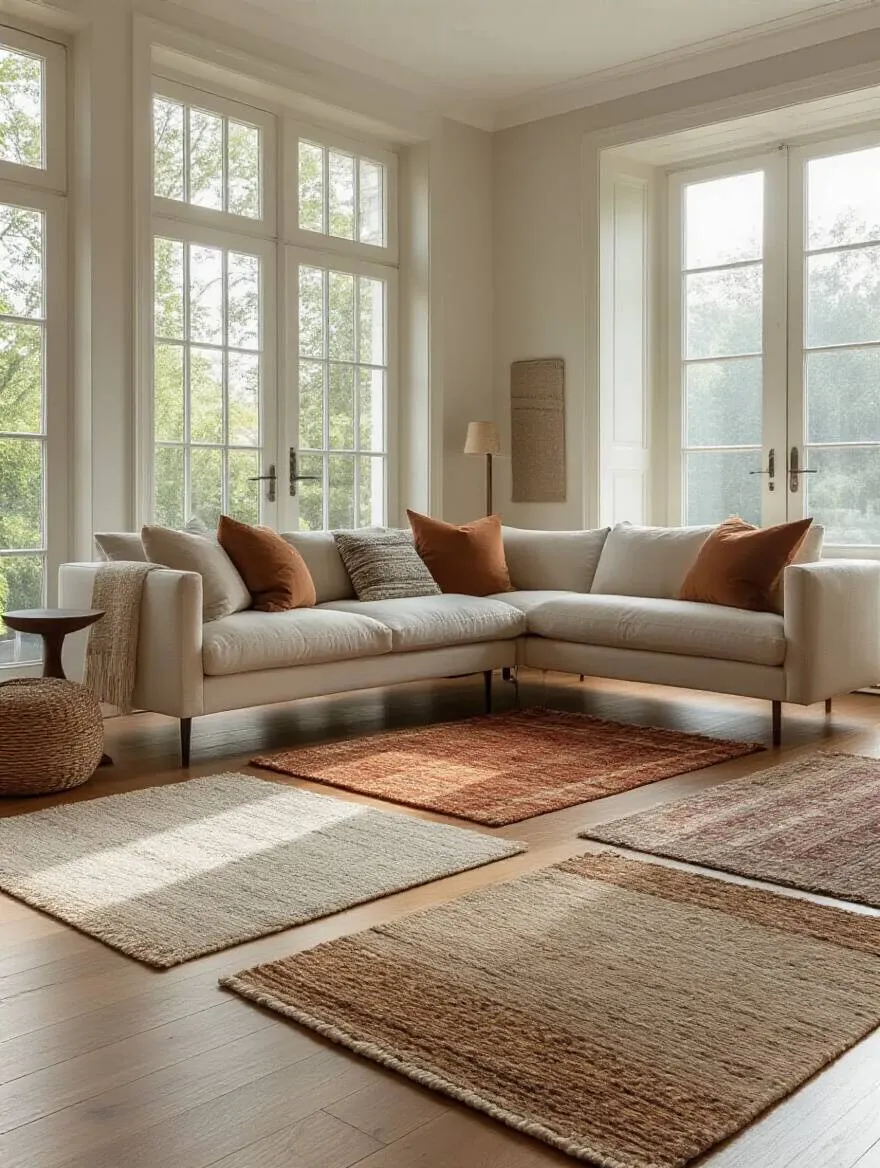
Let’s get real. Wool is the undisputed champ for a reason: it’s naturally stain-resistant, incredibly durable, and has a bounce-back that resists crushing. It costs more upfront, but the cost-per-year is often way lower than the cheap synthetics you’ll replace every couple of years. If you’ve got a high-traffic zone and can swing it, wool is a fantastic investment. For serious-business areas or homes where spills are a daily event, high-quality synthetics like nylon or solution-dyed polypropylene are workhorses. They’re basically indestructible and a breeze to clean. Just avoid those super cheap, shiny polyester rugs—they look matted down and sad almost immediately.
Now that we’ve covered the material, let’s talk about the actual length of those fibers, which has a huge impact on your daily life.
“Pile height” is just a fancy term for how thick or fluffy your rug is. And it matters a ton. A high-pile or “shag” rug feels amazing under your bare feet when you’re relaxing, but have you ever tried to hold a plank on one? Or vacuum Goldfish crackers out of it? It’s a nightmare. The pile height needs to match the function of the room. High-traffic areas and places where you might exercise demand a low pile. It’s easier to clean, more durable, and gives you a stable surface.
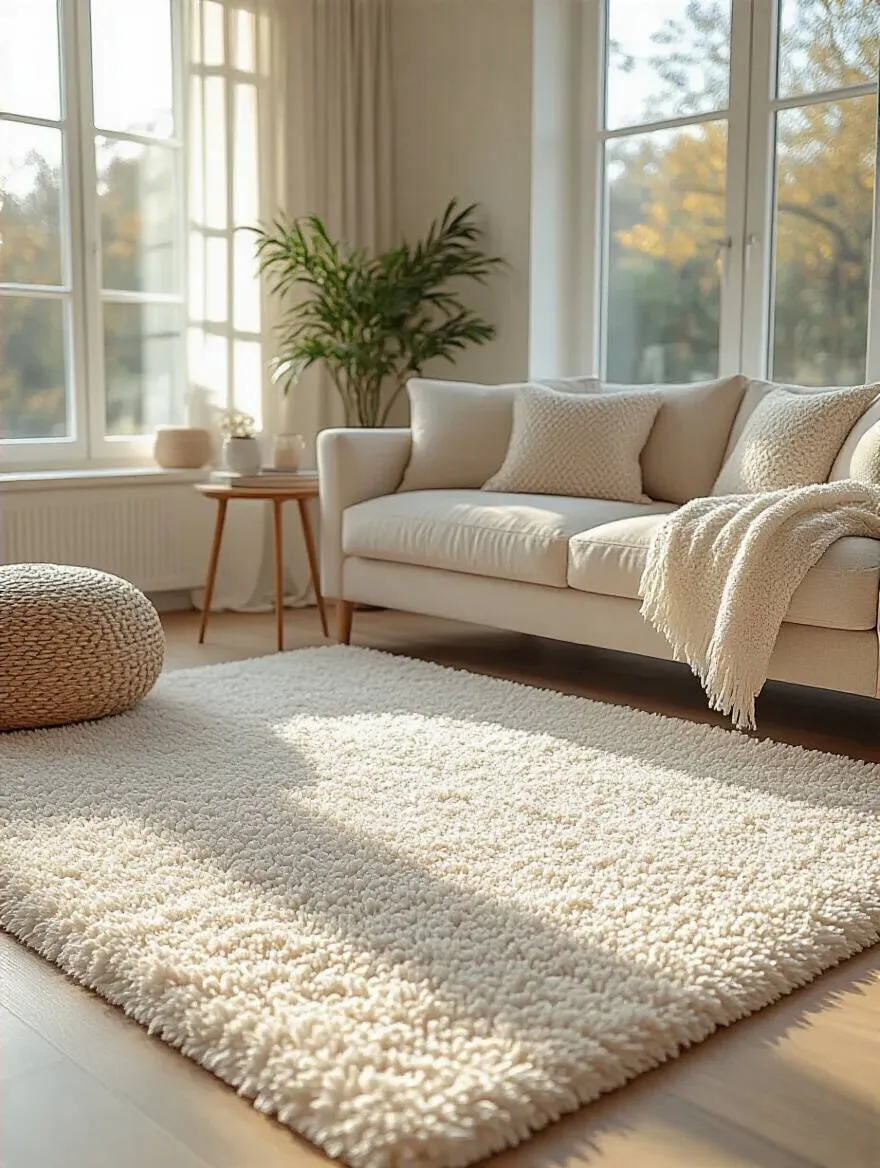
Here’s my rule: for rooms that are all about high-energy living—family rooms, main thoroughfares, or your designated home workout space—go with a low-pile or even a flatweave rug. They’re tough, they don’t show wear paths as easily, and a vacuum can actually clean them. Save the plush, medium-to-high pile rugs for lower-traffic areas where coziness is the absolute number one priority, like a formal living room or a bedroom. A little secret: you can get the best of both worlds by pairing a low-pile rug with a thick, high-quality rug pad underneath. All the cushion, none of the cleaning hassle.
Your budget is going to play a big part in this, but “cheapest” is almost never the smartest move.
I used to think saving money on a rug was a smart move. Then I watched a client buy a cheap $300 rug that looked great for about six months before it became a flat, stained mess. A year later, they bought another $300 rug. A quality rug isn’t an expense; it’s an investment in your home’s function and feel. When you budget, you have to stop thinking about the upfront cost and start thinking about the cost-per-year. That $1,500 wool rug that lasts 15 years? That’s $100 a year. That $300 synthetic rug that lasts two years? That’s $150 a year. You’re literally paying more to have an uglier rug.
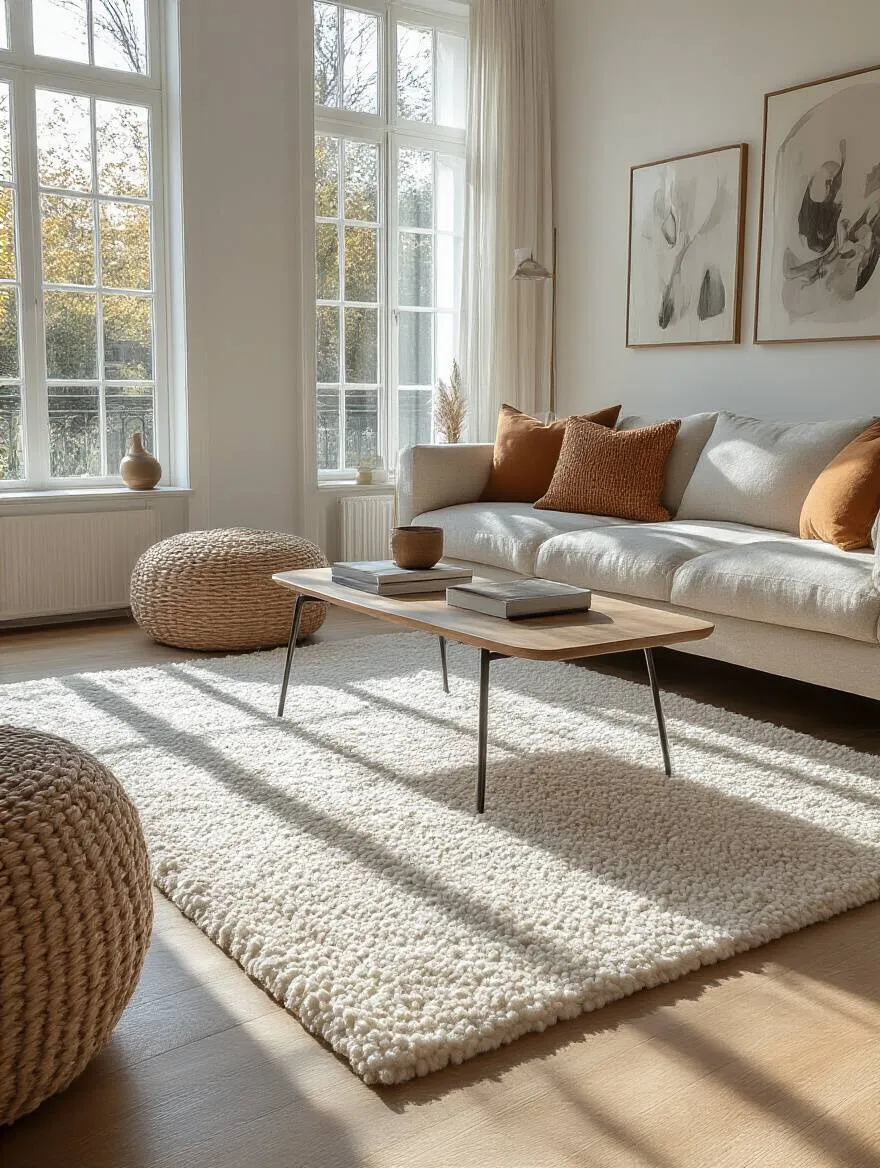
When you’re planning your room, allocate a real chunk of the budget to the rug—at least 10-20% of your total decor spend. It’s the anchor that makes all your other furniture look better. Think of it like buying good running shoes. Sure, you can get the $30 pair, but your knees are going to pay for it later. A quality rug, made from Durable Materials, is the support system for your entire room. And don’t forget to budget for a high-quality rug pad. It’s non-negotiable and will extend the life of whatever rug you buy.
Budgeting for a great rug is pointless if you get the size wrong, so let’s hammer that home one more time.
Let’s call out the biggest design sin: the “rug island.” That’s where you have a tiny rug floating in the middle of the room with all the furniture huddled around it, afraid to touch. It’s a disaster. It makes the room feel choppy, disconnected, and way smaller than it actually is. You want your rug to be a unifying force, a gravitational center that pulls your entire seating area together into one cohesive, welcoming zone.
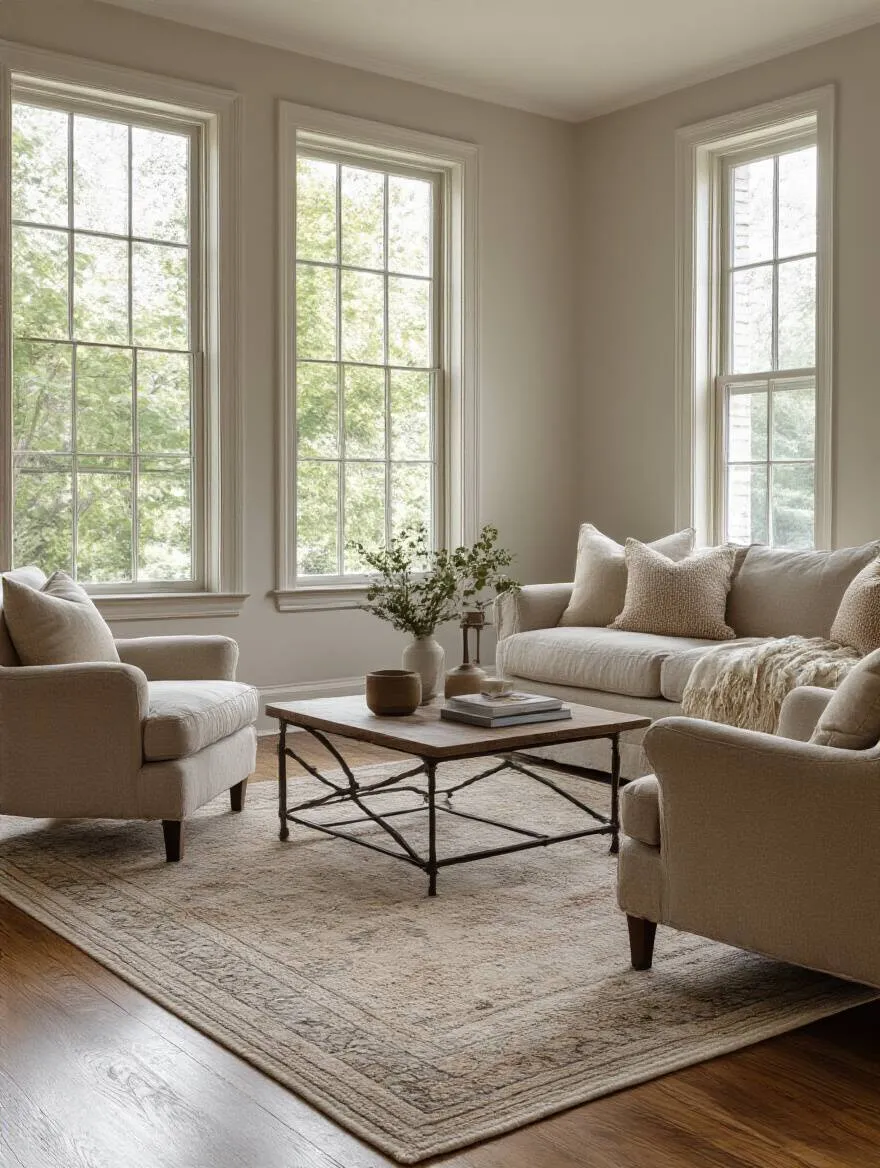
The simplest, most effective rule you can follow is the “Front Legs On” rule. At a minimum, the front two legs of your sofa and any armchairs should be sitting comfortably on the rug. This immediately connects the pieces and creates a defined space. If you can fit a rug that allows all the furniture to be completely on it, even better—that creates a truly luxurious and expansive feel. But “front legs on” is the gold standard for 90% of living rooms. It’s the difference between a room that looks like a furniture showroom and a room that feels like a home.
Okay, you’ve got the right rug. Now for the main event. Where you place this thing can totally change the energy and flow of your home. This is where we go from just having a rug to using a rug.
We just touched on this, but it’s so critical it needs its own rep. Anchoring your furniture is the rug’s primary job. Think of your seating arrangement as a team. If they’re all scattered, they can’t work together. The rug is the huddle. It brings everyone in, creates a unified front, and establishes a clear zone of action. A well-anchored space feels calm and put-together. An un-anchored space feels chaotic, like everything could just float away.
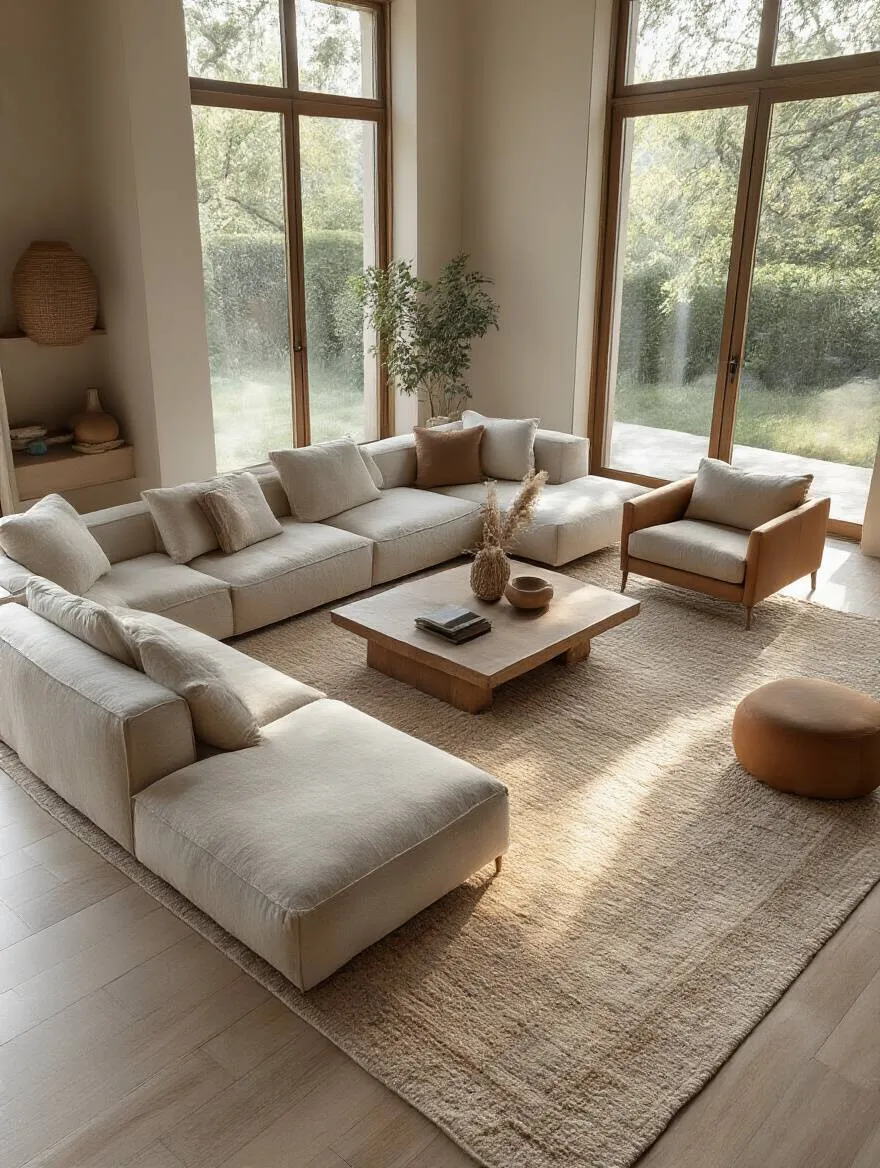
The “front legs on” rule is your go-to move. Pull your sofa and chairs into a comfortable conversation distance, and then make sure your rug is big enough to get under the front legs of all of them. This creates a visual connection that’s incredibly powerful. For a client in a massive open-concept loft, this single trick was the game-changer. We used a huge 10×14 rug to corral his sofa and four chairs, and instantly, that cavernous space had a warm, inviting living room right in the middle of it. The space didn’t shrink; it gained a purpose.
In those big open spaces, rugs do more than just anchor furniture—they build invisible walls.
Open-Concept Living is great until your living room, dining room, and home office all feel like one giant, messy warehouse. Rugs are your best friend here. They are the simplest, most effective way to create “rooms” without building walls. By placing a distinct rug in each functional area, you give each zone its own identity and purpose. Your brain instantly recognizes “that’s the living area,” “that’s the dining space,” and “that’s where I work.” It brings order to the chaos.
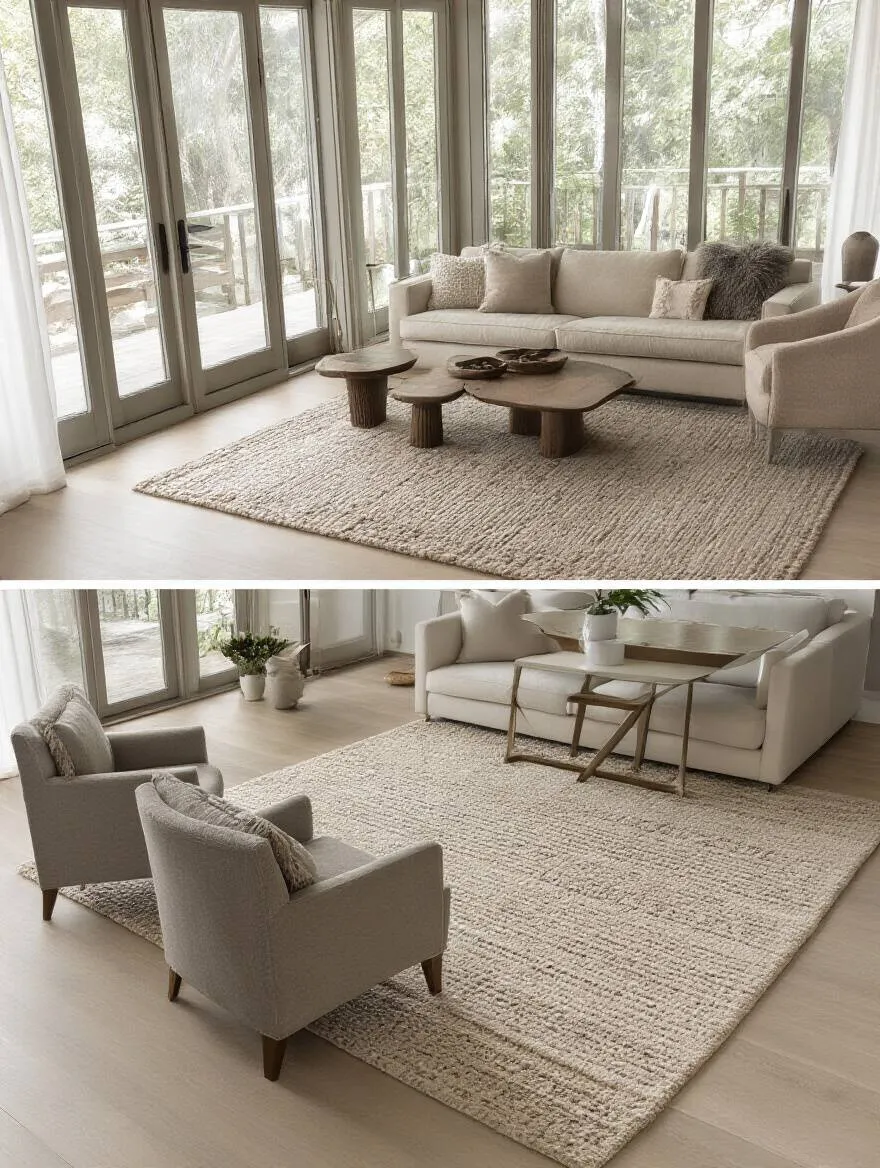
The key is to treat each zone as its own room. The living room rug should be big enough to anchor the sofa and chairs. The dining room rug needs to be large enough so that when you pull the chairs out to sit down, they stay on the rug. Nothing is more annoying than chair legs catching on the edge of the rug. Use different but complementary patterns or colors to give each zone a unique feel while still looking cohesive. I did this in my own home, using a durable, patterned polypropylene rug in the high-traffic family area and a softer, solid-color wool rug in the quieter reading nook. The effect is immediate and powerful.
Within those zones, finding the visual center is what gives the space its balance.
You’d think “center the rug” is obvious, but it’s tricky. People often make the mistake of centering the rug to the room’s architectural features, like the dead center of the floor. But you don’t live in the dead center of the floor; you live in your furniture grouping. You need to center the rug relative to the main axis of your space, which is usually a focal point like a fireplace, a big window, or the wall your sofa is on.
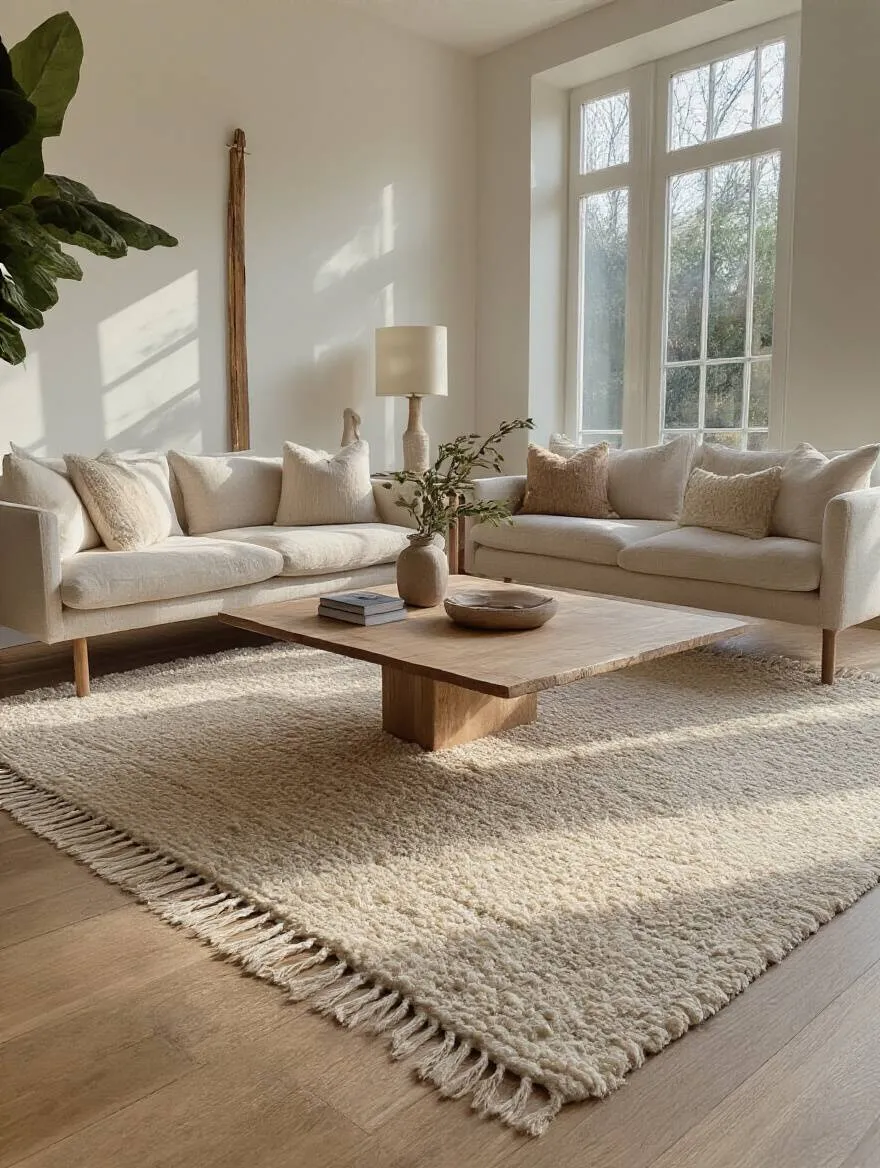
Think of your sofa and coffee table as the sun in your little solar system. The rug is the orbit that everything revolves around. Center the rug on your main furniture grouping first, then adjust the whole grouping to be centered on the room’s focal point. I had a client whose fireplace was off-center on the main wall. We centered the sofa and the rug on the fireplace, not the wall, and the entire room suddenly made sense. It felt balanced and intentional, even with the quirky architecture.
The way you orient that centered rug can also play powerful tricks on the eyes.
This is a pro-level design hack that is so simple. The direction you lay your rug can make your room feel longer or wider. If you have a long, narrow room that feels like a bowling alley, running the rug perpendicular to the long walls (i.e., the short way) will visually “stretch” the space, making it feel wider and more balanced. Conversely, if you have a short, wide room, running the rug parallel to the longest wall will draw the eye down the length of the room, making it feel deeper and more spacious.
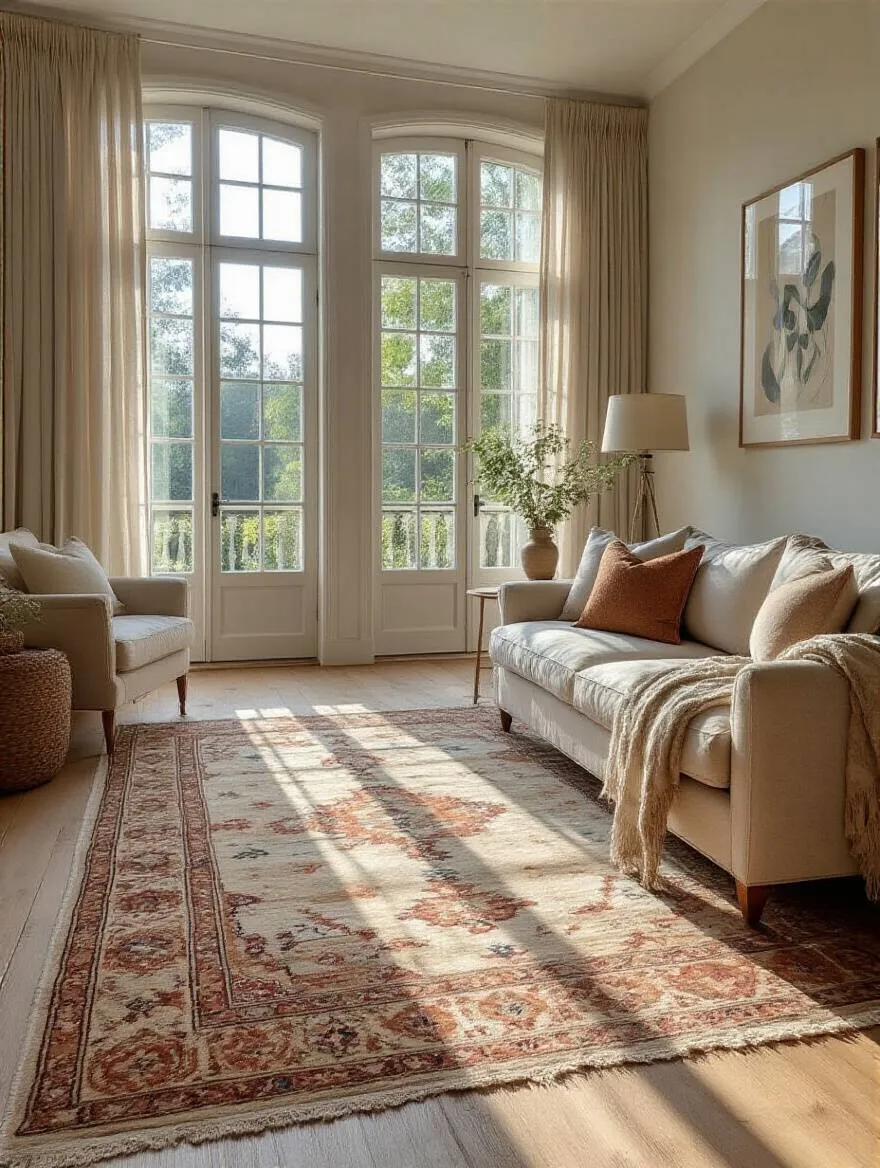
Think about what your room needs. Does it need to feel wider? Does it need to feel longer? Most of the time, you’ll run the rug the same direction as the room’s longest dimension to reinforce its shape, but breaking that rule is a powerful tool. In a narrow city apartment, turning a 6×9 rug to run across the width of the room instead of down its length was a game-changer for my client. It stopped that “hallway” feeling in its tracks and created a much more expansive and inviting seating area.
This is especially crucial when you’re working with limited square footage.
Here’s the biggest contradiction in design: to make a small room feel bigger, you need a bigger rug. I know it sounds crazy, but it’s true. Putting a tiny “postage stamp” rug in a small living room just highlights how small the room is. It chops up the floor and creates a lot of distracting, empty space around it. A larger rug that fills most of the floor space, or at least gets under the front legs of all your furniture, tricks the eye. It creates a single, unified, and unbroken surface that makes the entire room feel more expansive and cohesive.
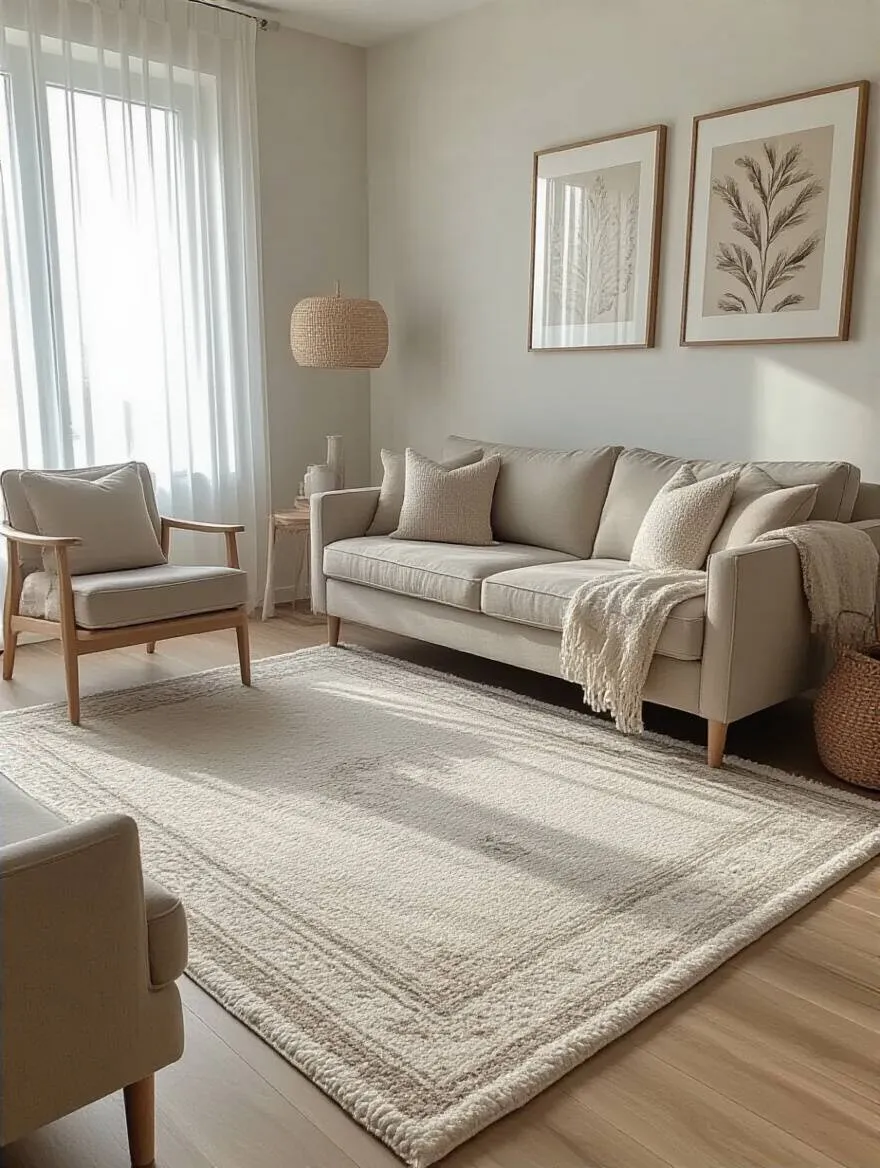
My go-to advice for small spaces is to get the biggest rug the room can handle while still leaving a small border of bare floor (say, 6-12 inches) around the edges. This creates a clean, defined look. Another great trick is to use a rug with a simple pattern or stripes. Vertical stripes can make a room feel longer, and horizontal stripes can make it feel wider. Don’t be afraid to go big. It’s the single most effective thing you can do to make a small room feel grand.
Alright, we’ve nailed the technical stuff. Now for the fun part. Your rug is a massive canvas. It’s your chance to inject personality, energy, and style into your space. This is how you make the room yours.
Your rug can be the thing that ties everything together. The easiest way to do this is to pull a color story from what you already have. Look at your sofa, your accent chairs, your curtains, and the art on your walls. What are the dominant colors? What are the secondary or accent colors? Your rug should pick up on at least one or two of those shades. It doesn’t have to be a perfect match—in fact, it’s better if it isn’t. A rug that’s a slightly darker or lighter shade of your wall color can add incredible depth.

I tell my clients to think of the “60-30-10” rule. 60% of your room is a dominant color (like your walls), 30% is a secondary color (like your sofa), and 10% is an accent color (pillows, art). Your rug can either be part of the 60 or 30, grounding the space, or it can be a big, bold expression of that 10% accent color. I once helped a client with a very neutral, beige living room. We brought in a rug with deep navy blue and small pops of the same beige. It instantly energized the space and gave the whole room a sophisticated anchor.
If you’re feeling bold, you can move beyond solid colors and play with patterns.
Mixing patterns can feel intimidating, but it’s the secret to a room that looks curated and personal, not like it came out of a catalog. The key to not making it a chaotic mess is to vary the scale of the patterns and connect them with color. If your main, large area rug has a big, bold geometric pattern, layer a smaller rug on top that has a much tighter, more intricate design, like a vintage-style floral. Or vice-versa. As long as the scales are different, they won’t compete.
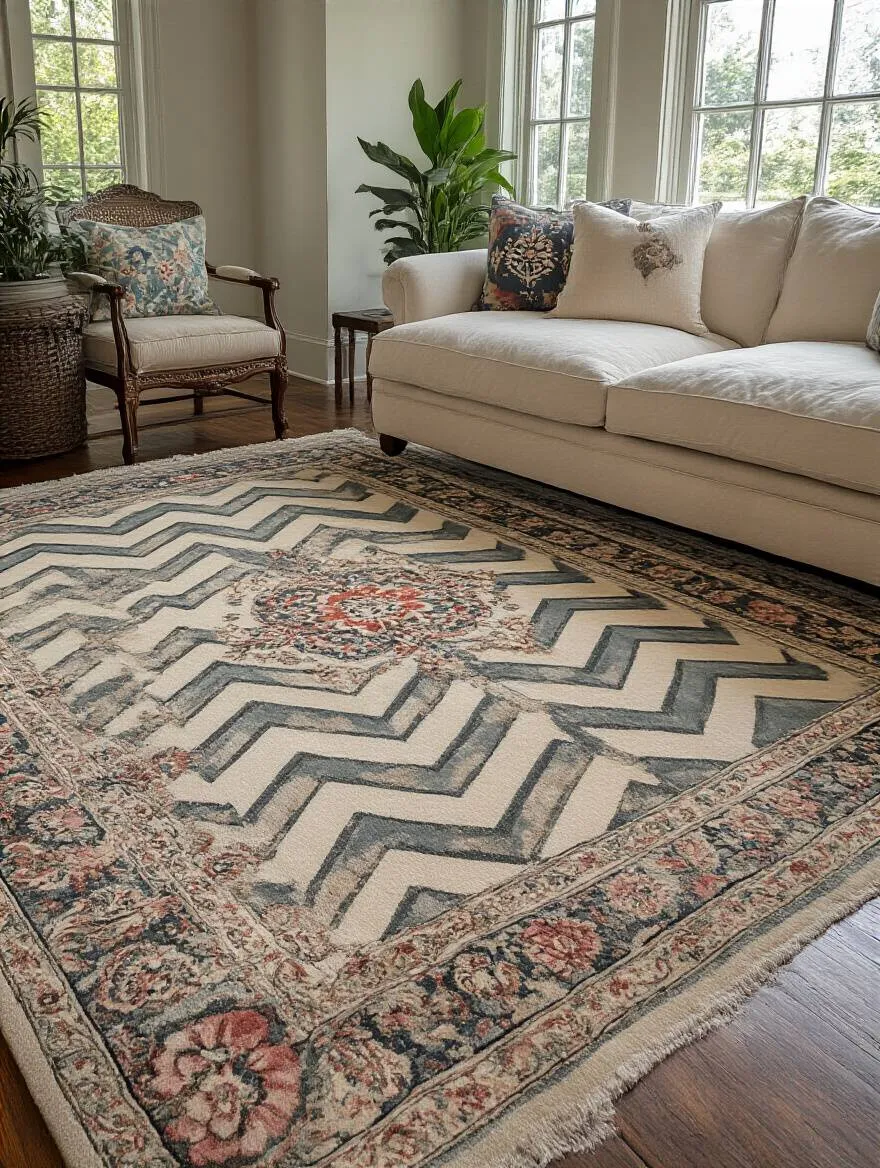
The second part of the trick is finding a common thread. The two (or even three) patterns should share at least one color. It can be a dominant color or just a tiny speck of a similar hue. That shared color is the bridge that connects the patterns and tells your brain, “This works together.” My favorite combo is a neutral, large-scale jute or sisal rug as a base, with a smaller, more colorful patterned wool rug layered on top. You get texture, color, and two different pattern scales all working in perfect harmony.
Texture itself is a powerful tool for adding that next level of richness to a room.
A room with only smooth, flat surfaces feels cold and one-dimensional. Texture is what makes a space feel warm, inviting, and real. Your rug is the biggest opportunity to introduce texture. Think about the difference between a flatweave cotton rug, a chunky wool loop, a silky viscose, or a rustic jute. They all bring a completely different energy to the room. The best rooms mix these textures. If you have a smooth leather sofa, a chunky knit rug can provide a beautiful contrast. If you have soft linen curtains, a sleek, low-pile rug might be the perfect complement.
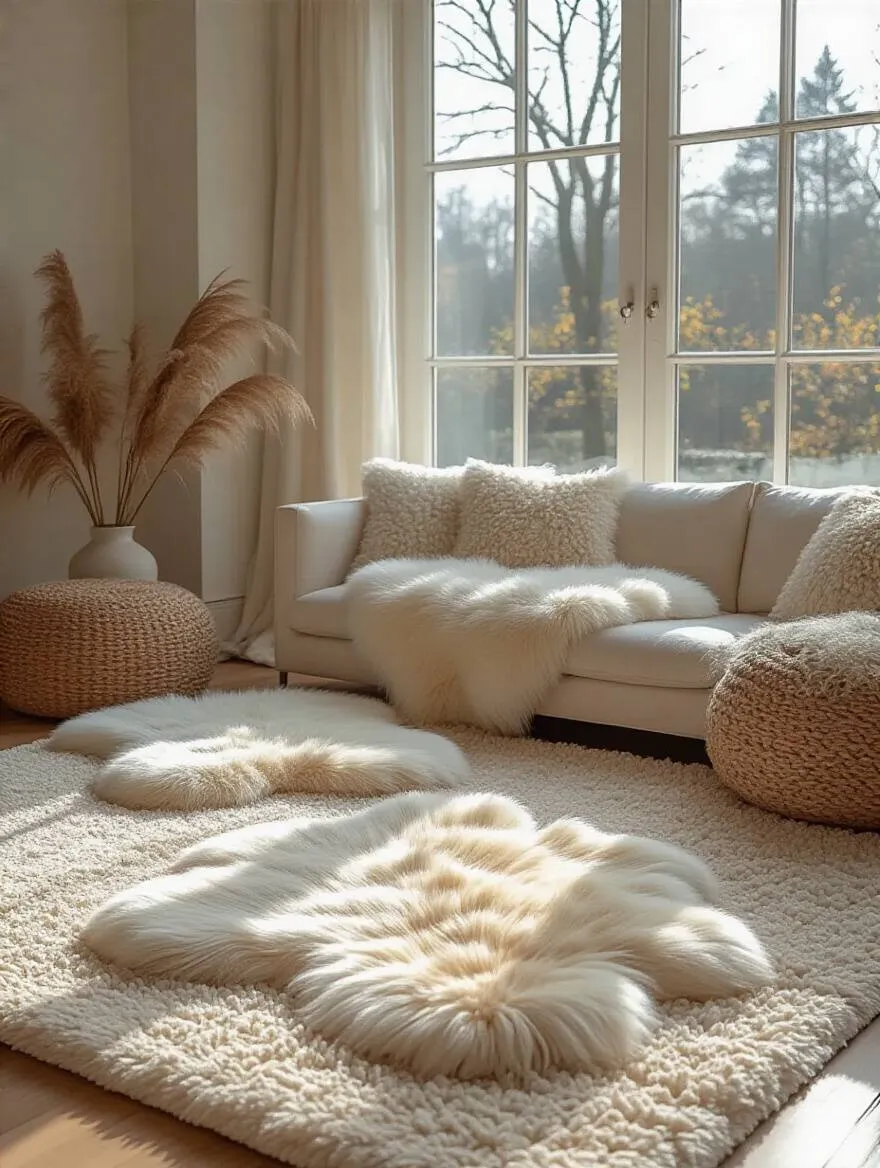
This is another area where layering is your superpower. I love placing a super soft, plush sheepskin rug over a more durable flatweave. It creates a little island of extreme coziness, a spot that just begs you to kick off your shoes and relax. It also adds a huge amount of visual interest and breaks up the monotony of a single surface. Don’t be afraid to mix and match. A room that engages your sense of touch is a room that feels more deeply comfortable.
Your rug can be more than just a background player—it can be the star of the show.
Sometimes, you don’t want a rug that just blends in. You want a rug that makes a statement. A bold, artistic, oversized rug can be the single most transformative element in a room. It acts as a piece of art for your floor, setting the tone and color palette for everything else. When you start with a powerful statement rug, decorating the rest of the room becomes easy—you just pull colors and themes from the rug itself.
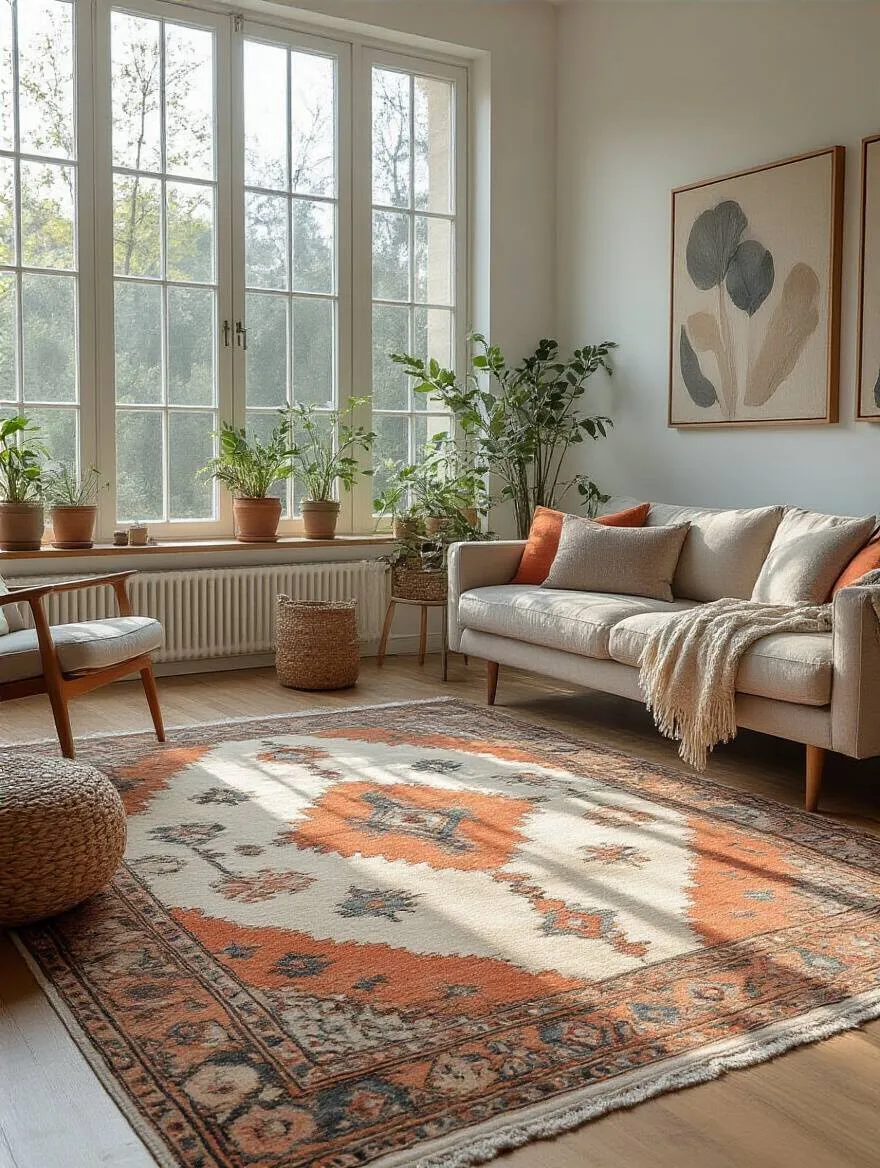
This works especially well in minimalist spaces or rooms with neutral furniture. A vibrant, abstract rug can bring all the energy and color the room needs. I had a client with a very modern, all-white loft. We brought in a massive, colorful vintage Moroccan rug, and the entire space came to life. It became the heart and soul of the room. The trick is to go big. A statement rug needs to have scale to have impact. A small, loud rug can just look like noise. A large, loud rug is art.
You’ve made a great investment. Now you have to protect it. A little bit of smart maintenance will keep your rug looking amazing for years, ensuring it continues to be the functional and aesthetic core of your home.
Listen up: a rug pad is not optional. I don’t care what kind of rug or floor you have. A rug pad is a non-negotiable part of the deal. First, it’s about safety. It stops your rug from slipping and bunching up, which is a major tripping hazard. Second, it protects your floors from scratches and color transfer from the rug’s backing. Third, and most importantly for your investment, it dramatically extends the life of your rug by absorbing the impact from foot traffic, which reduces the wear and tear on the rug fibers.
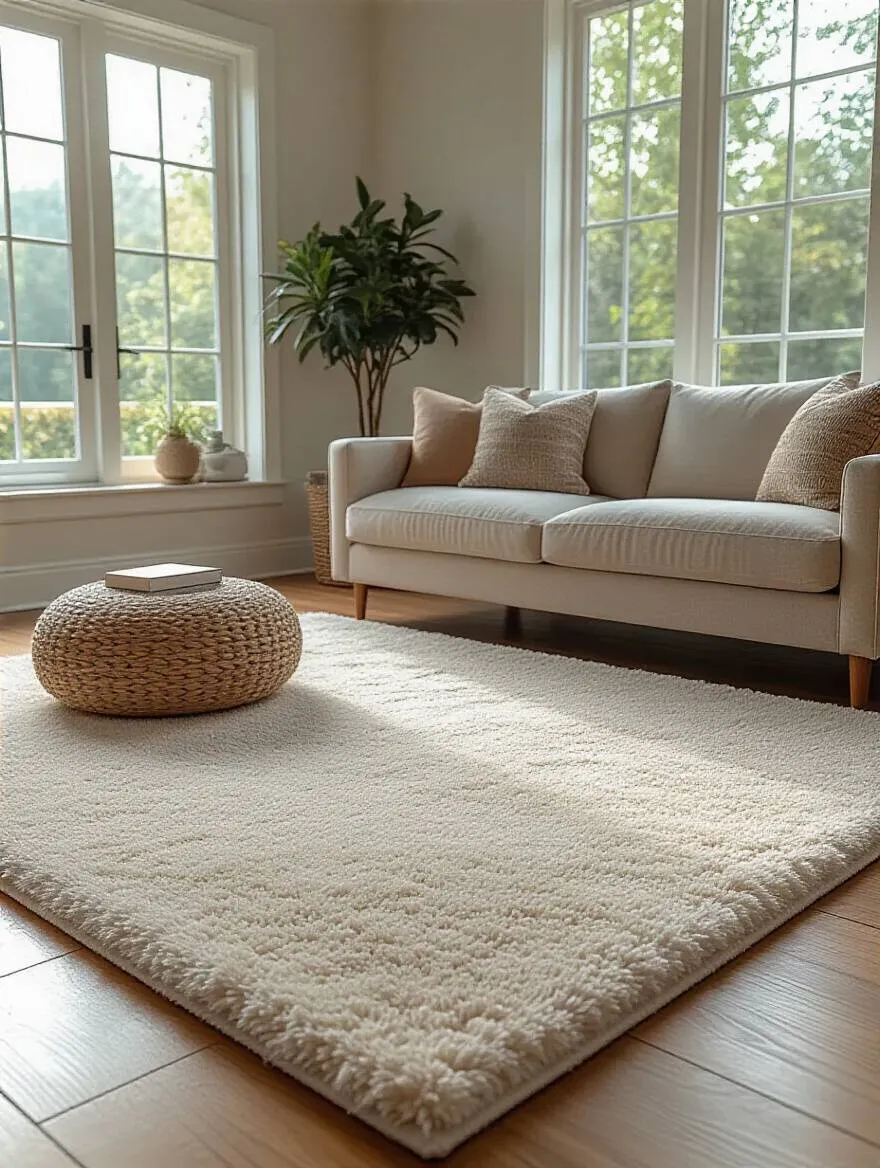
Don’t cheap out here. Those flimsy, sticky grid-like pads are mostly useless. You want a solid pad with a bit of cushion. For hard floors like wood or tile, get a felt and rubber combination pad—the rubber grips the floor and the felt grips the rug. For placing a rug over wall-to-wall carpet, you need a pad specifically designed to grip the carpet fibers. A good pad is like the shock absorbers for your car. You wouldn’t drive without them, so don’t put a rug down without one.
Once you’ve got that foundation, a simple cleaning routine is your best defense.
You can’t use the same cleaning method on a delicate silk rug that you use on a bulletproof polypropylene one. Knowing your material is the first step to not destroying it. The owner’s manual for your rug is on its tag. Read it. Most damage I see comes from using the wrong cleaner or technique. The number one rule for any spill, on any rug, is to blot, don’t rub. Rubbing just grinds the stain deeper into the fibers and can damage them permanently.

Your best tool is a good vacuum. For most rugs, you want to vacuum 1-2 times a week. If you have a rug with a pile (especially wool or other natural fibers), turn off the beater bar or set it to a high setting. An aggressive beater bar is like taking a wire brush to your rug—it just tears up the fibers. For serious spills on natural fibers, less is more. Blot with a dry cloth, then use a tiny bit of water and a cleaner specifically designed for that material. For synthetics, you can be a bit more aggressive with a mild soap and water solution. And for every rug, a professional cleaning every 1-2 years will wash away the deep-down grit and bring it back to life.
For those of us with furry teammates, a little extra defense is required.
Pets and beautiful rugs can coexist! I promise. It just takes a bit of strategy. First, choose a durable and easy-to-clean material to begin with. Wool’s natural lanolin makes it surprisingly resistant to stains and odors. Solution-dyed synthetics are also fantastic for homes with pets. Second, have an emergency response kit ready to go. This means a good supply of clean white cloths and a bottle of a high-quality enzyme-based pet stain cleaner. Enzyme cleaners don’t just mask the smell; they chemically break down the organic matter in the stain, eliminating it completely.

The other key to fighting wear and tear, whether from two-legged or four-legged family members, is rotation. Just like you rotate exercises to work different muscle groups, you need to rotate your rug. Every six months, turn your rug 180 degrees. This ensures that it wears evenly and prevents a permanent, worn-down “traffic lane” from forming in one spot. It also evens out any potential sun fading. It’s a simple, free move that can double the life of your rug.
Finally, let’s talk about the toughest environments: non-stop sun and non-stop traffic.
Some parts of your home are just brutal on furnishings. The hallway from the front door, the space right in front of the sofa, or the spot under a huge, west-facing window. For these high-stress zones, you need to choose your rug like you’re choosing performance gear. For high-traffic areas, you want something with a dense, low pile that won’t crush and mat down. Again, wool and high-quality nylon are champions here. A busy pattern or a multi-tonal design is also a great camouflage artist, hiding the inevitable dirt and minor wear.
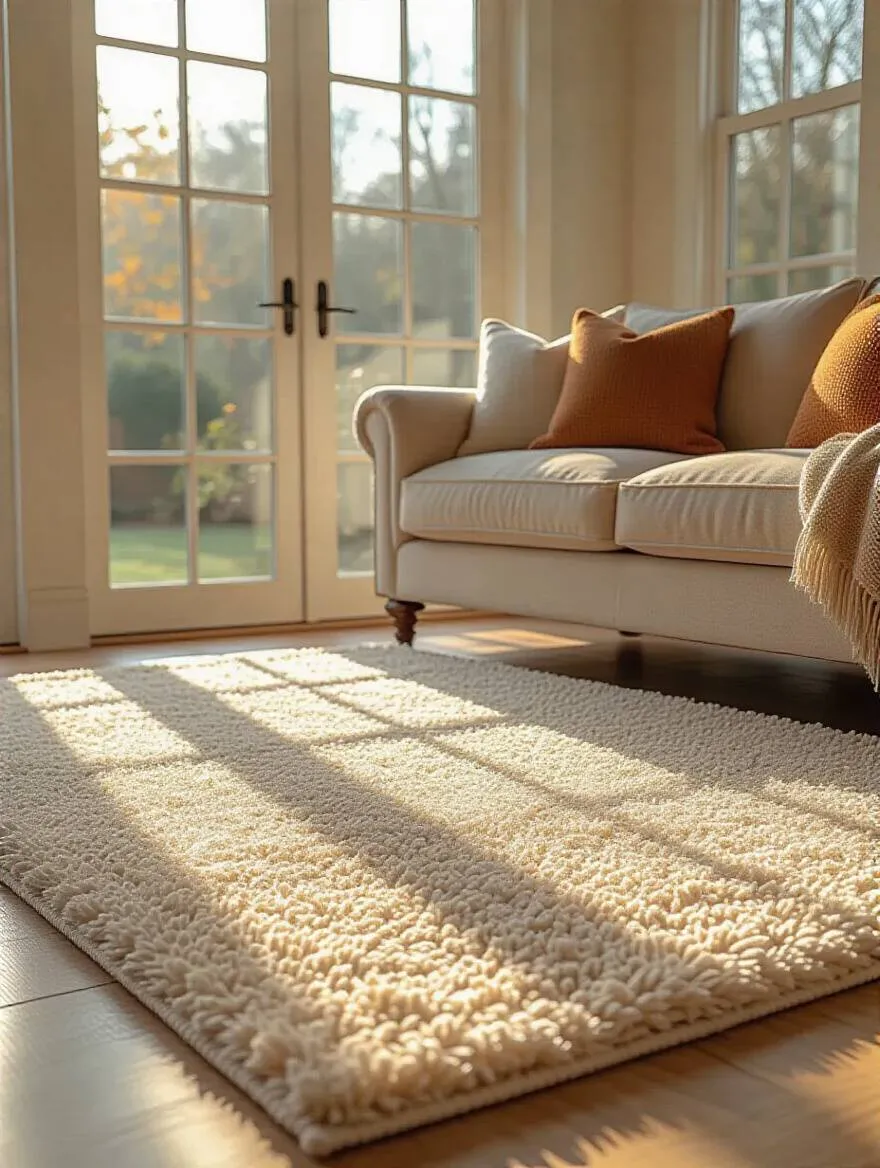
For sun-drenched spots, UV resistance is the name of the game. Sunlight will fade almost any dye over time, but some materials are far better than others. Solution-dyed synthetics (like polypropylene, also called olefin) are the absolute best because the color is part of the fiber itself, not just coated on the surface. They are incredibly fade-resistant. If you love natural fibers, lighter colors will show fading less than darker, saturated ones. You can also use a UV-blocking film on your windows, which is a great investment for protecting all your furniture, not just your rug.